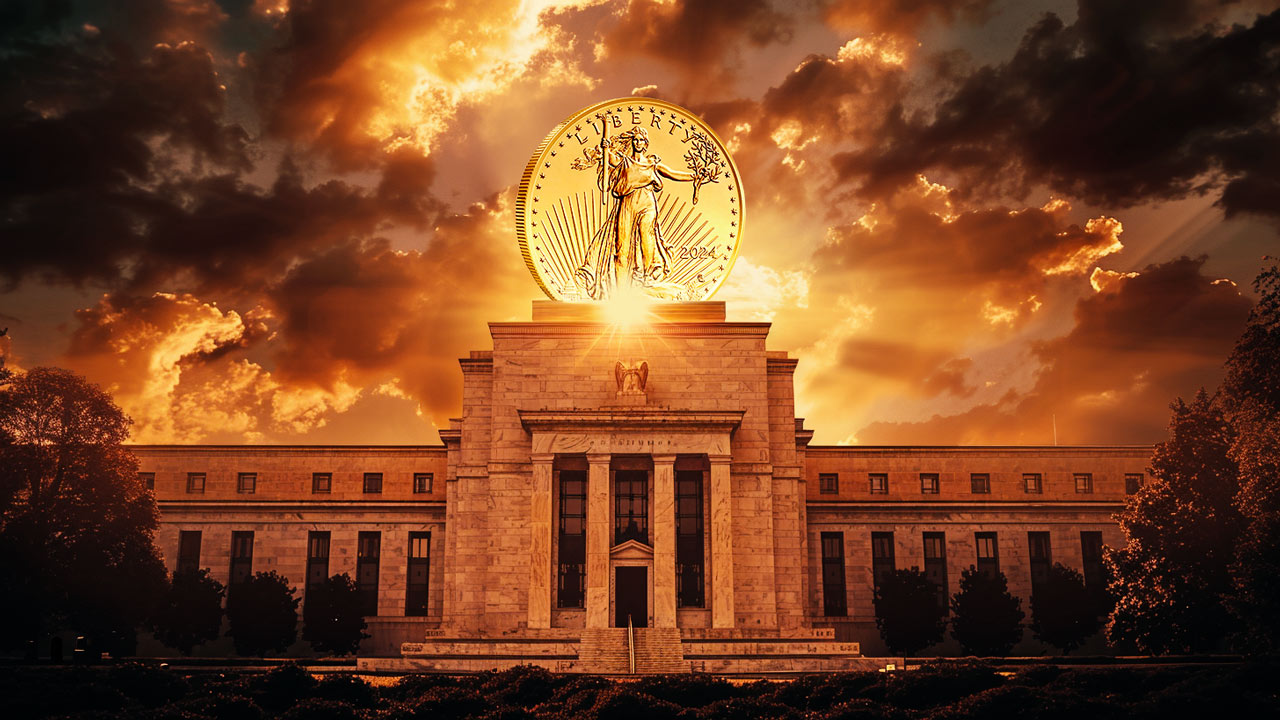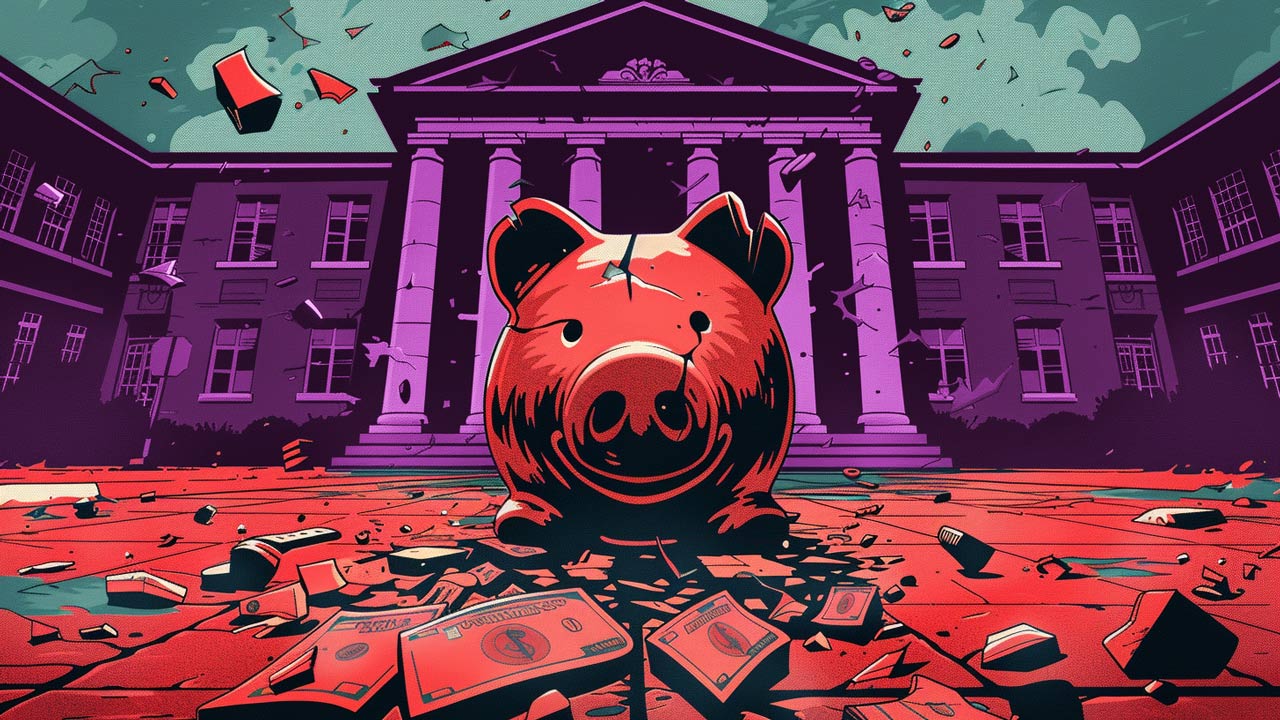Bernanke’s Golden Dismount
Michael Pento’s Market Commentary
There can be little doubt that Fed Chairman Benjamin Bernanke has been a very, very good friend to gold investors. However, some of those who have benefited from his largesse now fear that the recent selloff in gold indicates an imminent end to Bernanke’s monetary high-wire act. Most assume that a cessation of the Fed’s stimulative efforts, if it were to occur, would spell the end of gold’s bull run. But a closer reading of Bernanke’s economic philosophy and the Fed’s own recent history, shows that once a central banker begins a strenuous routine, it is very hard, if not impossible, for them to dismount.
It is widely believed that the unemployment rate, core inflation and home prices are the three key pieces of economic data that Bernanke and his Fed cohorts rely upon when formulating monetary policy. Although other data points, such as regional manufacturing surveys and the producer price index (which have rebounded significantly in some cases) attract some attention, they do not carry near the weight of the big three. With the unemployment rate remaining north of 9.4%, YOY core CPI inflation still less than 1% and the Case/Shiller Home Price Index down .8% from the year ago period, the Fed is in no mood to downshift. If anything, my guess is that Bernanke will step on the gas.
More importantly, in light of Bernanke’s often stated conclusion that premature Fed tightening in 1937 and 1938 led to a prolongation of the Great Depression, even if the big three metrics were to show marked improvement, any future increase in interest rates will be moderate and held in abeyance for as long as politically possible.
Despite the fact that some economic data is improving, the foundation of the economy is getting worse. Consumers are now increasing their borrowing again–as evidenced by last week’s number on consumer credit–and our government is now massively overleveraged. But leaving alone the deteriorating nature of these forward looking metrics, the Fed’s own history provides unexpected good news for those holding tight to their gold positions.
The Fed began its last round of rate hikes in June of 2004 when Fed Chairman Alan Greenspan began a sequence of consecutive 25 basis point increases. The Maestro bumped rates 14 times before passing the baton to Bernanke in February of 2006, who continued the program with three more ¼ point increases. The combined efforts took rates from 1% to 5.25% in the span of two years. However, the tightening program did nothing to tarnish the luster of gold. Here’s why.
Since the Fed increased interest rates very slowly from an extremely low level, money supply continued to expand during the long, slow, deliberate campaign of 25 basis point increases. From June 2004 through June 2006 the M2 money supply increased 9.3%, rising from $6.27 trillion to $6.85 trillion. Total loans and leases from commercial banks jumped from $4.61 trillion to $5.71 trillion during that same time period, an increase of 24%. As a result, over the time that the Fed’s dynamic duo waged their phony war against the asset bubbles of the mid 2000’s, the price of gold increased from $395 to $623 per ounce.
The truth is that increases in money supply and bank lending aren’t curtailed very much by a Fed Funds target rate that is increased very slowly from a starting point that is decidedly below the rate of inflation. Currently, Fed Funds is decidedly below the rate of inflation, and is likely to stay there for some time. Therefore, investors need not necessarily fear a run on gold once Bernanke eventually lifts rates from zero percent….if he ever makes that decision.
In addition, investors should keep their eyes on the damage created by these ultra low rates. An enormously destructive housing bubble grew out 1% and 1.5% rates that were in place from November of 2002 thru August of 2004. In our current round, the Fed has kept interest rates near zero since December 2008…more than two years! Why should we expect a different outcome this time around?
A key point to mention is that the credit crisis and collapse of the housing market were not caused by a the Fed bringing rates to 5.25%. Rather real estate prices simply went too high because rates were too low in the years prior. The low rates were the problem. And once home prices became unaffordable to most consumers, banks then became insolvent because millions defaulted on mortgages. After their capital became significantly eroded they were subsequently unable to lend.
The bottom line is that if Bernanke should ever attempt a “dismount” from massive monetary easing, investors should take solace not because he is likely to “stick” the landing, but because the exercise will likely be so futile that owners of gold should continue to shine.



 With the AI boom and green energy push fueling fresh copper demand, and with copper mines aging and not enough projects to match demand with supply, the forecasted copper shortage has finally arrived in earnest. Coupled with persistently high inflation in the US, EU, and elsewhere, I predict the industrial metal will surpass its 2022 top to reach a […]
With the AI boom and green energy push fueling fresh copper demand, and with copper mines aging and not enough projects to match demand with supply, the forecasted copper shortage has finally arrived in earnest. Coupled with persistently high inflation in the US, EU, and elsewhere, I predict the industrial metal will surpass its 2022 top to reach a […] America’s trust in its institutions has rapidly eroded over the past 20 years. We have a lower level of trust in our judicial system and elections than most European countries. Some of this is natural, as Americans are uniquely individualistic, but much of it arises from repeated government failures.
America’s trust in its institutions has rapidly eroded over the past 20 years. We have a lower level of trust in our judicial system and elections than most European countries. Some of this is natural, as Americans are uniquely individualistic, but much of it arises from repeated government failures. Decades of negative interest rate policy in Japan have ended. That could mean the end of the $20 trillion “yen carry trade,” once one of the most popular trades on foreign exchange markets, and a chain reaction in the global economy. The yen carry trade is when investors borrow yen to buy assets denominated in […]
Decades of negative interest rate policy in Japan have ended. That could mean the end of the $20 trillion “yen carry trade,” once one of the most popular trades on foreign exchange markets, and a chain reaction in the global economy. The yen carry trade is when investors borrow yen to buy assets denominated in […] With a hot CPI report casting a shadow of doubt on the likelihood of a June interest rate cut, all eyes are on the Fed. But they’ve caught themselves in a “damned if they do, damned if they don’t” moment for the economy — and the news for gold is good regardless.
With a hot CPI report casting a shadow of doubt on the likelihood of a June interest rate cut, all eyes are on the Fed. But they’ve caught themselves in a “damned if they do, damned if they don’t” moment for the economy — and the news for gold is good regardless.  It’s no secret that the American public is wildly ignorant of many issues that are central to the success of our nation. Just a generation ago it would have been unthinkable that less than half of the American population could recognize all three branches of government. America is in most cases far less educated about its government […]
It’s no secret that the American public is wildly ignorant of many issues that are central to the success of our nation. Just a generation ago it would have been unthinkable that less than half of the American population could recognize all three branches of government. America is in most cases far less educated about its government […]
Leave a Reply